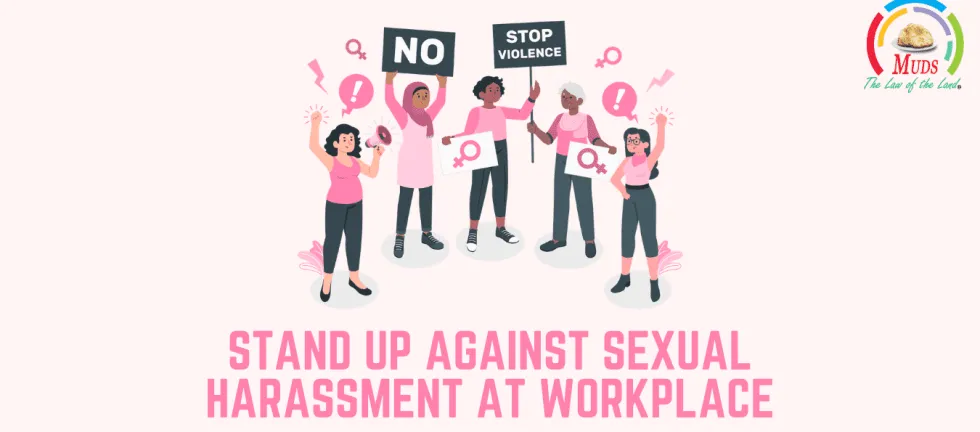Introduction
Workplace harassment constitutes a gross violation of women’s right to equality and dignity. It has its roots in patriarchy and its attendant perception that men are superior to women and that some forms of violence against women are acceptable. One of these is workplace sexual harassment, which views various forms of such harassment, as harmless and trivial. Often, it is excused as ‘natural’ male behavior or ‘harmless flirtation’ that women enjoy. Contrary to these perceptions, it causes serious harm and is also a strong manifestation of sex discrimination in the workplace.
To change this order of things, measures must be taken to change mindsets and attitudes by creating awareness about what constitutes sexual harassment and the steps that can be taken to address it. This article aims to shed light on the multifaceted nature of workplace harassment against women, offering insights into its far-reaching consequences and outlining actionable strategies for prevention and intervention.
Types of Harassment Faced by Women
Sexual harassment: Sexual harassment at the workplace is a heinous crime and more common than you might think. It is an offense that is not specific to women only. It is a type of workplace harassment where a person belonging to any gender can be the victim or the perpetrator of sexual harassment. Unwelcome sexual advances, requests for sexual favors, or other verbal or physical conduct of a sexual nature.
Verbal abuse: Includes offensive remarks, derogatory comments, or slurs based on gender or sexual orientation, either in person, through written communication, or via electronic means such as emails or text messages. Since this is a non-physical form of violence, it includes insults like fat-shaming/body-shaming jokes, hurtful comments, and unwanted taunting, thus, often challenging to recognize
Psychological harassment: Psychological harassment includes taking credit for others’ achievements, making impossible demands, imposing impossible deadlines on an employee, forcing someone to work outside their job scope, etc. This is a form of deliberate psychological bullying is the most common type of workplace harassment. Victims who face such harassment are more likely to suffer mental breakdowns and low self-esteem and tend to undermine themselves.
Physical harassment: Physical harassment in the workplace has many degrees. Such harassment includes improper touching of clothing, and skin, physical assaults, threats, or damaging personal property. People belonging to gender minorities and LGBTQIA+ communities are more likely to face such kinds of harassment at work.
Cyber Harassment: Harassment that occurs online, through social media platforms, email, or other digital communication channels, including sending explicit or threatening messages, sharing inappropriate content, or cyberstalking.
Impact on women
The impact of workplace harassment is far-reaching and is an injury to the equal rights of women. Not only does it impact her, but it also has a direct bearing on workplace productivity as well as the development of society. one study found that 34% of female employees say a colleague has sexually harassed them.
They often lose self-esteem and confidence in themselves and their competency, and they often report a loss of motivation or passion for their work. In addition, disruptions and loss of significant relationships, inside and outside the workplace or academic community, are common. Psychologists report that workplace harassment can lead to depression and post-traumatic stress disorder. And organizational behaviorists link it to an increased risk of long-term physical health problems.
In AAUW’s survey, 38% of women who’d been harassed said it contributed to their decision to leave a job early, and 37% said it disrupted their career advancement. When women decrease their hours or leave their jobs to avoid a harasser, it reduces their wages and ability to save and build wealth.
Legal Framework

Internal Complaint Committee (ICC)
A crucial aspect of the POSH Act is the mandatory establishment of an Internal Complaint Committee (ICC) in organizations with ten or more employees. The ICC is responsible for receiving complaints of workplace harassment, conducting a detailed and unbiased investigation into the complaints, and making recommendations to the employer on the actions to be taken based on their findings. The formation of an ICC ensures that there is a dedicated body within the organization to address and resolve complaints in a fair and timely manner.
Confidentiality
The POSH Act mandates strict confidentiality regarding the identity of the complainant, the respondent, and the details of the complaint and investigation. This confidentiality is crucial in encouraging victims to come forward without fear of exposure or stigma. Any breach of confidentiality can result in penalties, further reinforcing the importance of privacy in these matters.
Penalties
The Act prescribes penalties for employers who fail to comply with its provisions. These penalties can include fines and, in severe cases, imprisonment. Employers are held accountable for ensuring that their workplaces adhere to the guidelines outlined in the POSH Act. Failure to do so can result in significant legal and financial consequences, underscoring the importance of compliance.
Redressal Mechanism
The POSH Act provides a detailed redressal mechanism to handle complaints of workplace harassment effectively:
Filing a Complaint: An aggrieved woman can file a complaint with the ICC within three months of the incident. The period for filing a complaint can be extended by another three months if the ICC is satisfied with the reasons for the delay.
Inquiry Process: Upon receiving a complaint, the ICC must initiate an inquiry. The ICC can summon documents, examine witnesses, and collect relevant evidence during the inquiry. The parties involved are allowed to present their case.
Interim Relief: During the pendency of the inquiry, the ICC may recommend interim measures to the employer, such as transferring the complainant or granting leave to the complainant.
Completion of Inquiry: The inquiry must be completed within 90 days. The ICC then submits its findings and recommendations to the employer. Action by Employer: Based on the ICC’s recommendations, the employer must take appropriate action within 60 days against workplace harassment. This can include disciplinary action against the respondent, changes to workplace policies, or any other measures to ensure a safe working environment.
Appeal: Both the complainant and the respondent have the right to appeal the ICC’s decision in a court of law if they are dissatisfied with the outcome. This structured process ensures that complaints are handled efficiently, impartially, and promptly, providing a reliable avenue for redressal.
Employer Responsibilities
Policy Development
Employers are required to develop and disseminate a comprehensive anti-workplace harassment policy. This policy should clearly outline the definition of workplace harassment, the process for filing a complaint, the procedure for investigation, and the penalties for false complaints. The policy should be accessible to all employees and regularly updated to reflect changes in the law or organizational practices.
ICC Formation
Employers must establish a functional ICC as per the guidelines of the POSH Act. The members of the ICC should be trained to handle complaints with sensitivity and impartiality. Regular training sessions should be conducted to keep the members updated on the latest legal developments and best practices in handling workplace harassment cases.
Awareness Programs
Regular awareness programs are essential to educate employees about the POSH Act and its implications. These programs should cover topics such as the definition of sexual harassment, how to file a complaint, the role of the ICC, and the importance of maintaining a respectful workplace. Awareness programs can include workshops, seminars, online
training modules, and informational materials.
Complaint Handling
Employers must provide a robust and supportive mechanism for receiving, investigating, and resolving complaints of workplace harassment. This includes ensuring that complaints are handled promptly and confidentially, that the complainant is not subjected to any retaliation, and that appropriate action is taken based on the findings of the ICC. Employers should also provide support to the complainant, such as counseling or temporary relocation, if necessary.
Safe Working Environment
Employers are responsible for taking proactive measures to create a safe and respectful work environment for all employees. This includes regular safety audits, ensuring proper lighting and security measures in the workplace, and fostering a culture of respect and inclusivity. Employers should also address any factors that could contribute to a hostile work environment, such as gender bias or discriminatory practices.

Conclusion
In conclusion, addressing workplace harassment against women is a moral imperative and crucial for fostering inclusive and productive work environments. Through comprehensive policies, robust reporting mechanisms, and a culture of accountability, organizations can create safer spaces where women feel empowered to contribute their fullest potential without fear of discrimination or harassment.
Leaders need to recognize the detrimental effects of workplace harassment on individuals, teams, and organizational reputation, and take proactive measures to prevent and address such behavior. By championing respect, equality, and dignity for all employees, workplaces can thrive and become beacons of societal equity and justice.
-BHAWNA AND SNEHA
MUST READ: SUPREME COURT’S VERDICT ON SAME-SEX MARRIAGE: THE STRUGGLE CONTINUES


